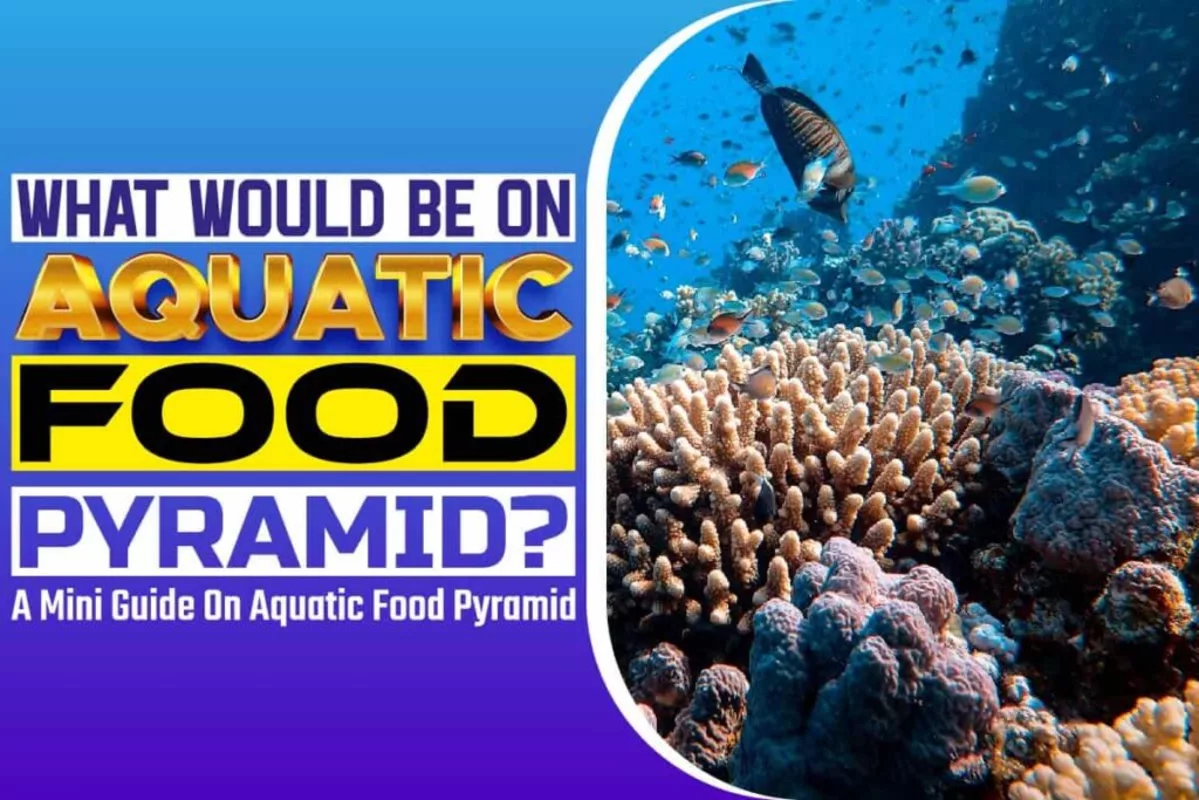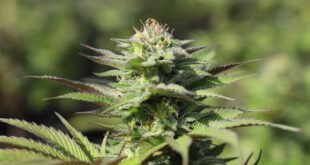A simple explanation of what would be on an aquatic food pyramid would clear any confusion. The aquatic pyramid (marine pyramid) includes details of the trophic levels.
The aquatic food pyramid explains the food chain as it happens in the marine world. It explains what aquatic animals prey on.
This post explains what the aquatic food pyramid entails. Read for more details about the marine ecosystem.
What Would Be On Aquatic Food Pyramid?
The aquatic food pyramid provides details of basic marine food web. The first trophic level comprises organisms regarded as producers, such as plants and algae. They are called primary producers.
Organisms in the second trophic level are called first order consumers. These organisms feed on organisms in the first trophic level. The organism on the third trophic level feeds on the organism on the second trophic level, and so on.
A Handy Tip: The trophic level helps to provide a detailed structure for understanding of the food chain. It shows how energy flows from one organism to another in the same ecosystem.
What Happens In The Food Pyramid?
There are four major components of the aquatic food pyramid or web. This web describes who consumes whom in the system. It comprises interconnected food chains that help us understand the changes that influence changes in the ecosystem. For instance, removing an aquatic predator or adding more nutrients that favor the growth of the bottom producers can affect the food pyramid positively or negatively.
Phytoplankton and algae, for example, form the bases of the aquatic food pyramid. These components are consumed by the primary consumers, such as small fishes and crustaceans. The primary consumers like small fishes and crustaceans are consumed by larger fishes, including small sharks, baleen whales, and corals.
The top organisms on the food pyramid are the larger sharks, dolphins, toothed whales, billfish and larger seals. It is important to note that humans consume from every section of the aquatic food pyramid. It is also possible to find some of these components in different areas of the aquatic pyramid.
Components Of The Aquatic Food Pyramid
Every component of the aquatic food pyramid belongs to one or more of the following;
- Producers
- Consumers
- Scavengers
- Opportunistic Feeders
1. Producers
The primary producers are at the bottom line of the aquatic food pyramid. Primary producers include bacteria, phytoplankton, and algae. Primary producers will synthesize and produce their energy without eating anything from the food chain.
Most producers will photo-synthesize using the energy absorbed from the sun to produce carbohydrates. In some cases, some producers can synthesize and create carbohydrates without energy from the sun.
Primary producers who don’t need sunlight to synthesize rely on chemosynthesis to metabolize chemicals released from hydrothermal vents and methane seeps. Many other geological components contribute to chemosynthesis used in generating carbohydrates, and they are readily available.
Producers are the ones that can regenerate themselves without the need for other components of the food web. Since they form the basis of the aquatic food web, the food pyramid will die out quicker if the producers don’t regenerate. Without producers, the consumers’ population will deplete quicker, and there will be even a faster depletion of predators.
2. Consumers
Consumers are the most miniature aquatic food pyramid components that feed on producers to survive. Zooplankton, including copepods, fish larvae, rotifers, and small invertebrates, belong to the primary consumers of the food chain. These consumers graze through the aquatic waters to consume phytoplankton.
Larger animals like fish, reptiles, marine snails and mammals are also classified as consumers because they feed on algae inside the water. Filter-feeding animals like tube worms, bivalves, sponges, and large animals like Manta rays and baleen whales are also classified as consumers in the food pyramid.
Predators in the aquatic world are consumers that feed on other animals and not producers. Pursuit predators like sharks, sunflower sea stars, box jellyfish, and fishes like herring, tuna, and cod are consumers that always hunt for their prey.
The ambush predators like some eels, octopuses, mantis shrimps, and scorpionfish are consumers that hide and suddenly attack their prey to survive.
Consumers with few or no predators include leopard seals, killer whales, large sharks, marlin, and sunflower sea stars. These are consumers who mostly die on their own, and opportunistic feeders feed on them.
More significant consumers often die when they grow old or become infected with diseases. Sometimes pollutants, especially from industrial wastes, often cause the depletion of all groups of consumers.
3. The Scavengers
Scavengers are the only part of the aquatic food pyramid that feed on dead consumers mainly. All uneaten animals and organisms often sink to the bottom of the aquatic body. Most scavengers in the aquatic pyramid live in the bottom of the water, where they feed on dead animals. Crabs and lobsters are some of the most prominent members of the scavenger group.
Scavengers are the components of the food chain that do the least of the work. They don’t have to work to feed. The organic materials from dead aquatic animals are decomposed by bacteria, and the waste generated will become nutrients for the producer group to be nourished and regenerate. When a large whale dies, for instance, the entire ecosystem will gather to consume the new food source.
4. The Opportunistic Feeders
Most organisms in the aquatic food pyramid can be opportunistic at one time or the other. This means they can eat anywhere within the food web. Some animals do eat themselves.
The Effect Of Diverse Activities On The Aquatic
The aquatic food web or pyramid is affected or influenced by several factors that are summarized below;
1. The Ecosystem Effects
The Ecosystem itself affects the aquatic food pyramid. If, for instance, there is a depletion of a common food prey, a predator might be forced to consume more of a similar or other species of what they regularly consume.
Changes in one component of the food web may trigger a trophic cascade that can throw organisms across another trophic level, off-balance. When a top predator is depleted or obliterated, the prey will multiply and become more abundant because fewer components are eaten.
With more prey available, the organisms that consume them become scarcer. This means that simple changes can create complex ecosystem effects. The direct and indirect interactions of depleting one component of the food pyramid can trigger ripple effects through the pyramid.
2. Human Activities and Aquatic Food Webs
Humans play a critical role in the aquatic food pyramid since humans are consumers like sharks and killer whales.
Unfortunately, today, humans are making the most impact on the aquatic food pyramid. Pollution from human activities is constantly altering the numbers at different levels of the pyramid. The most typical human pollutants are; sediment pollutants, organic pollution, acidification, eutrophication, heavy metal pollution, thermal pollution, and nuclear pollution.
People continue to dump untreated chemical substances like fertilizers, sewage, and other industrial wastes inside the aquatic body. These wastes have continued to deplete fishes and other aquatic animals.
Chemicals dumped from humans may also kill producer groups of the aquatic habitats, including the planktons and bacteria. Humans also harm themselves when they consume fishes that have consumed chemical pollutants. Consuming aquatic animals that have consumed harmful chemicals can cause cancer and many other diseases. It is believed that by 2050, there will be more plastics than fishes in the ocean, with the rate at which humans dump non-degradable plastics in oceans across the world.
In addition to dumping chemical substances into the aquatic bodies, people who practice aquaculture, especially fishermen, create imbalances in the pyramid with their uncontrolled fishing. This issue has forced many governments worldwide to impose fishing regulations to help replenish the affected sections of the pyramid.
3. Climate Change
Aside from humans, varying climatic conditions, especially global warming effects, are causing severe disruptions to the aquatic food habitat. Rapidly changing climate conditions like global warming have forced some aquatic animals to migrate to regions that are cooler for their survival. There are so many unexplainable mass deaths of aquatic animals recorded recently, and most of these cases have been traced to global warming and human activities.
most of these cases have been traced to global warming and human activities.
The impact of climate change on aquatic food web is a broad topic on its own. Climate change can cause the total collapse of aquatic food chains, and this could have a direct impact on other ecosystems.
When there is an imbalance in the marine ecosystem’s food web, others are not left out. So quickly, here are more details on the impact of global warming on the aquatic food pyramid.
What Impact Does Climate Change Have On Aquatic Food Pyramids?
The impact climate change currently has on aquatic food chains isn’t that huge, although experts predict things could change in the next few decades.
Climate change is warming the earth. And this impact is causing a change in land and marine ecosystems producing foods for animals and humans.
In the ocean, things are not so complicated now. The heat warming up the ocean is just at the surface and scientists claim it would take around a century for the heat to travel down into deeper waters. The scary thing is as the heat travels down the deeper waters, it would alter the ocean’s circulation, making aquatic food webs less productive.
A study on the impact sustained warming has on marine biological productivity indicates that risk climate change poses to aquatic food chains. The researchers examined how climate warming to 2300 affects marine fishes and aquatic ecosystems.
Planktons are food for fishes, and require certain nutrients to survive on water surfaces, including multiplying. The researchers discovered that global warming is altering factors responsible for driving aquatic ecosystems. These include water temperature, wind, ocean circulation, and sea ice cover.
Another thing this disruption would cause is driving nutrients planktons need to sustain themselves, deep into the ocean. This starvation created by climate change could result in 20 percent reduction in global fish catch by 2300.
According to the research, which is the obvious fact, reduction in global fish catch will affect millions of people. That’s what happens when a key food source is tempered with.
How The Aquatic Food Habitat Can Be Sustained
Reviving the aquatic food habitat is very important for the survival of not only the components of the habitat but the human race at large. Since humans depend on diverse aquatic animals as a major source of protein, it is important to maintain a balance in the aquatic food structure.
Waste materials discharged into aquatic bodies like the sea and oceans must be treated and certified to be safe for aquatic life before they are discharged. There should be a proper waste collection system for picnickers at the beaches. This will help in reducing the numbers of plastics and other non-biodegradable substances left behind at such places.
Human activities such as deforestation and fossil fuel burning are wreaking havoc on the protective ozone layer of the earth, triggering global warming. Switching to renewable energy as a source of survival is more important than ever before. This will help protect aquatic animals that are badly affected by global warming and help maintain a stable food pyramid.
 Being Human
Being Human





